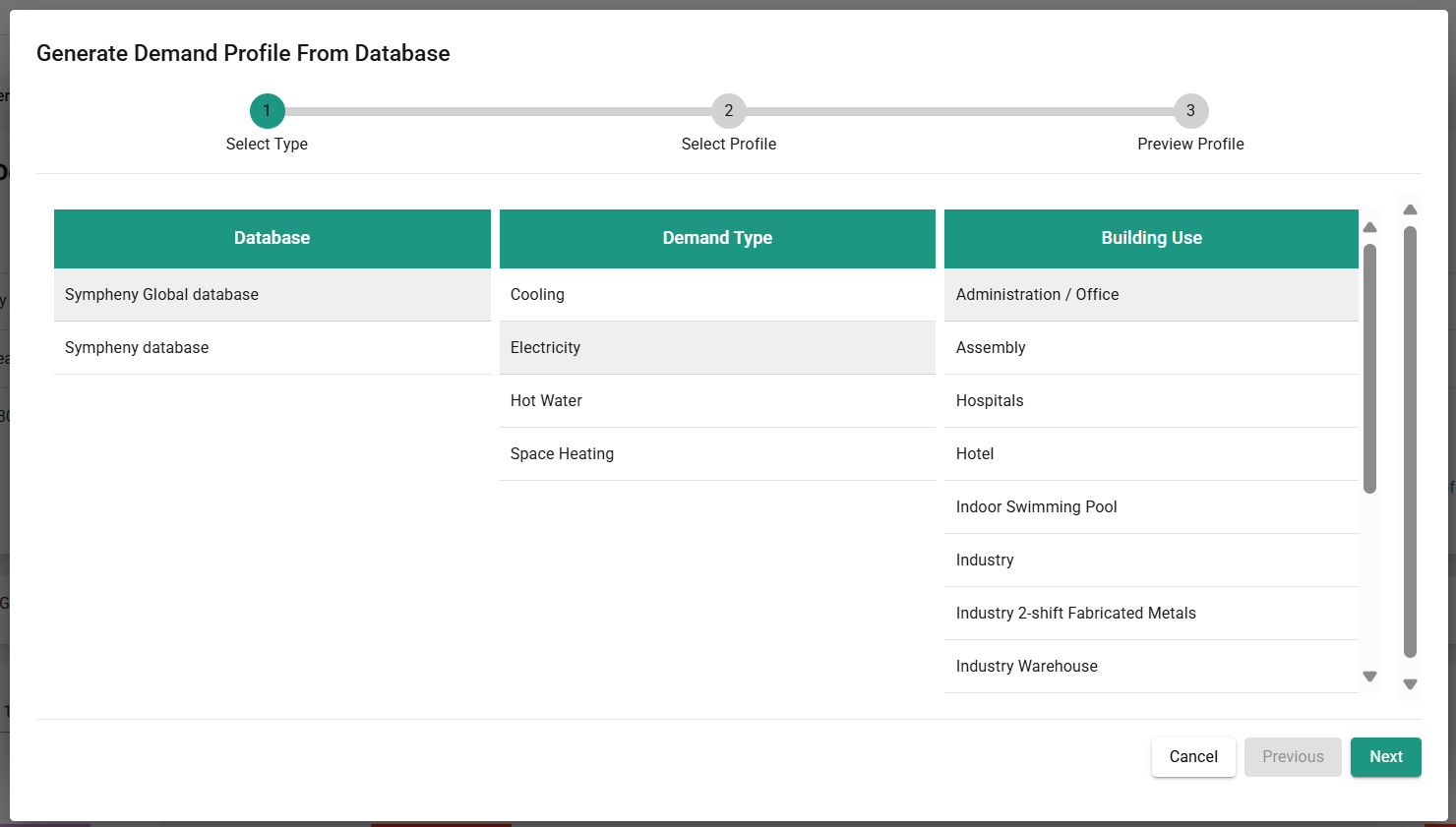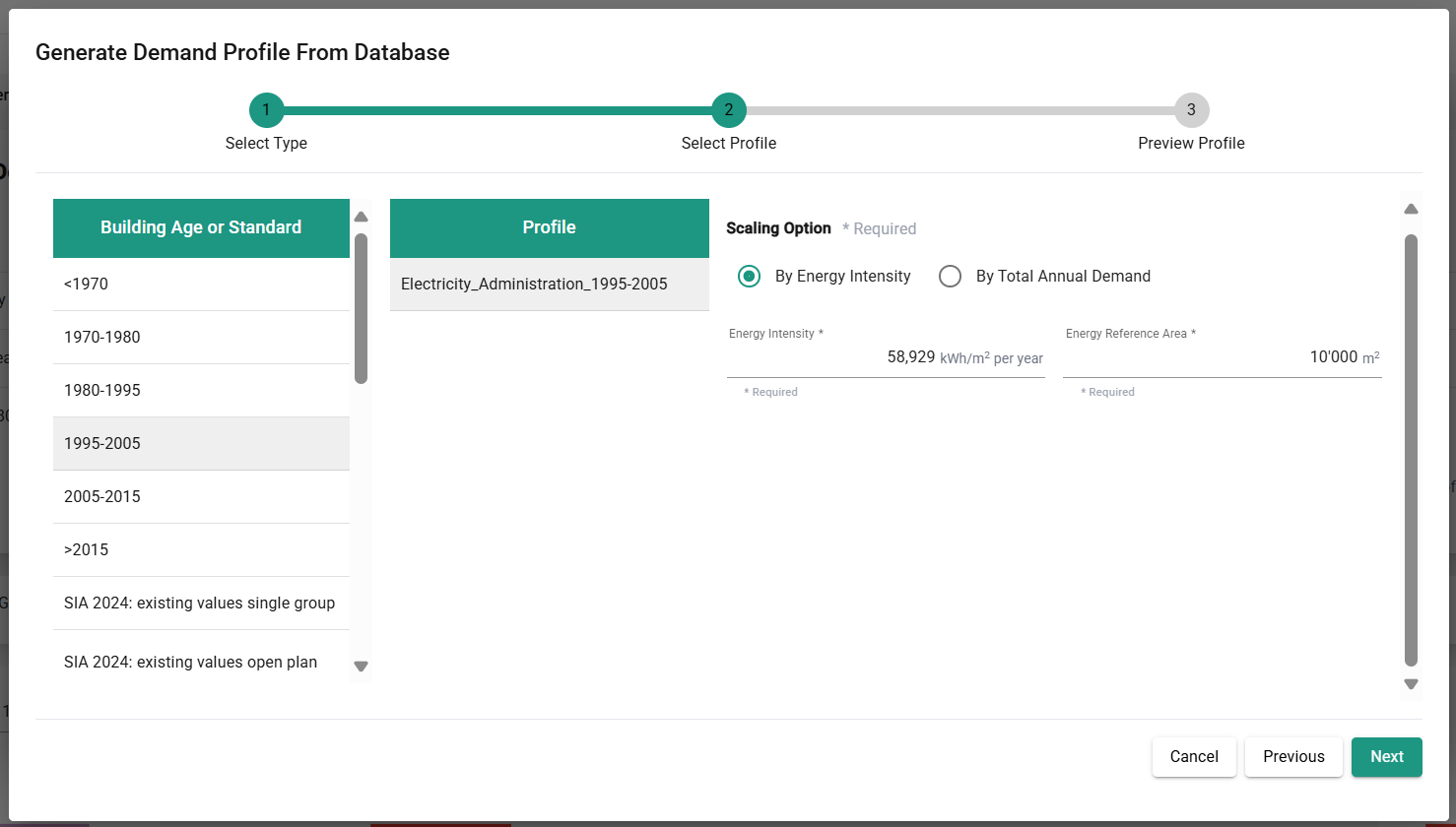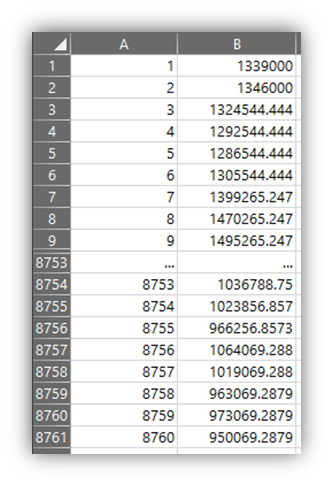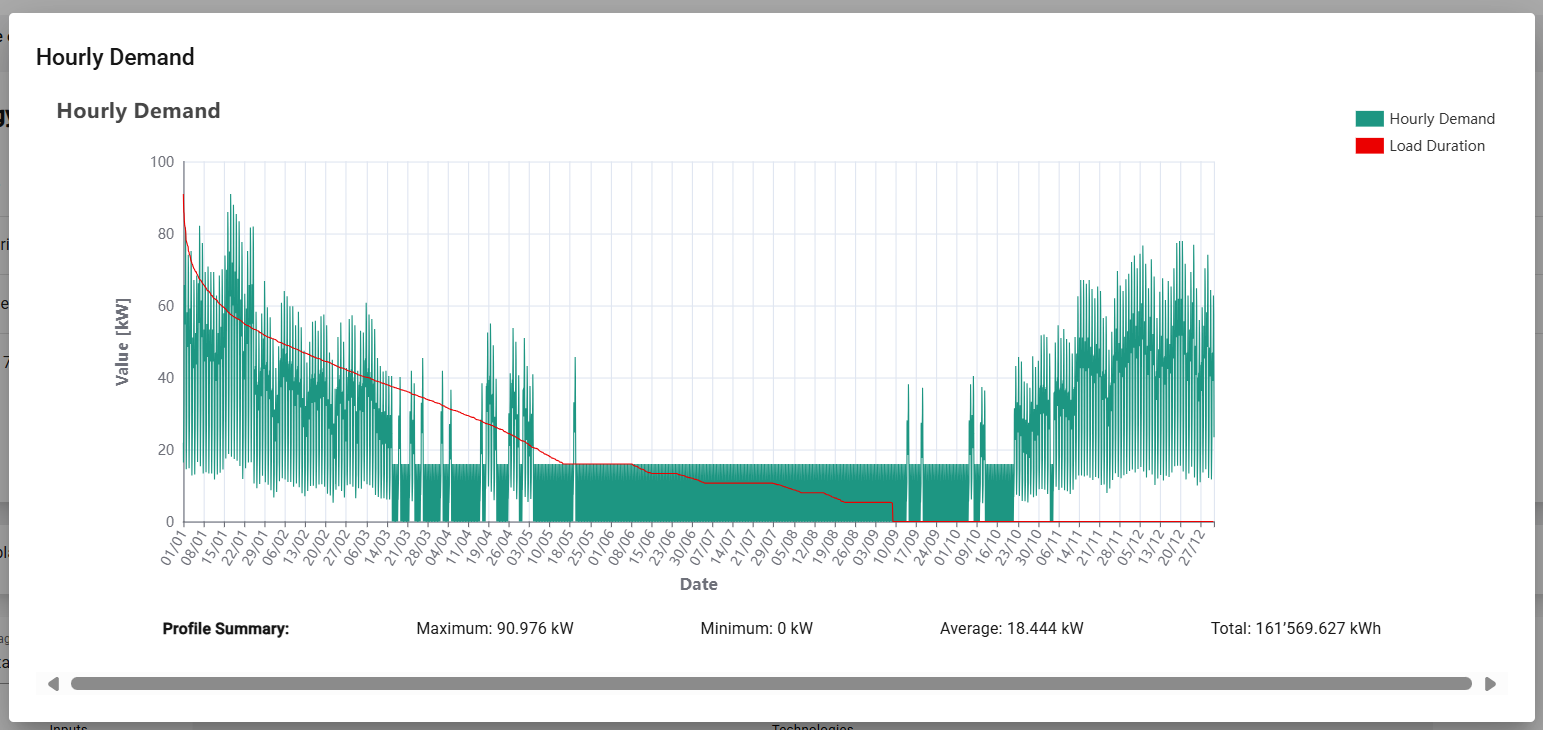Energy Demands Step
In this step, you define all energy demands included in your scenario. Each demand must be assigned with a unique name, an energy carrier, and must be linked to at least one hub and one stage. For additional information, see the Energy Demands section.

Add New
Users have four options for creating Energy Demand profiles:
Generate Profile: Automatically generate a profile based on building use types, standard norms, and the organization's internal database.
Upload Profile: Upload a custom profile file directly.
Select Saved: Choose an existing profile from the user's personal database.

Tip: Integrate via API to upload or modify multiple profiles in a single operation. If your license includes the use of API, contact our support team to get a template, code samples and guidance. For more information, see the Accessing the API section.
Generate Profile
Generate standard hourly energy demand profiles for buildings of different types. After clicking the Generate Profile button, a box will open where you can specify the parameters of the profile to be generated. The process is broken down into three steps:

Database: Select the database to use. This will be either Sympheny’s database or your Organization’s database. For more information on databases, see Database Center.
Profile Type: By selecting a combination of Demand Type and Building Use, you define the shape of the profile. This profile is normalized, meaning its total sum is 1 kWh/year.

Energy Use: The normalized profile is multiplied by the annual energy demand in kWh/year. This value can be entered directly as Total Annual Demand. Alternatively, the provided list of Building Age or Standard gives an estimate of the Energy Intensity in kWh/year/m², and the Energy Reference Area in m² needs to be specified.

Summary: A statistical summary of the demand profile is shown below, including the source of the data used to generate the profile. For more detail on how the profiles were generated and a list of available profiles, see the Demand Profile Methodology.
Upload New
An energy demand profile may be specified in a XLSX file and uploaded. The profile should be specified in kWh and for every hour of the year from the 1st of January to the 31st of December. The maximum size of the XLSX file is 2 MB. The file should consist of a single sheet, containing 2 columns, no header, and exactly 8760 rows. Empty values, if any, must be replaced by 0. The 1st column contains the index (incrementing integers from 1 to 8760). The 2nd column contains the values corresponding to the hourly energy demand in kWh.
Download and edit this template (or any Sympheny demand profile) to make sure your format match (TEMPLATE PROFILE XLSX):

Tip: Make sure your custom profile match a Sympheny year. A year in Sympheny starts at 00:00 on a Monday, 1st of January and ends after at 23:00 on December 31st. 2018 is a good example, because it starts on a Monday and it is not a leap year.
Select Saved
When uploading or generating a profile, you are given the option to Save the profile for future use. Using Select Saved, you can load an energy profile you have saved in the past.
Visualization of demand data
Once a demand is added and connected, a box representing the demand will be visible on the energy hub diagram. The demand profile that has been added can be downloaded as an excel file. For each energy demand included in the scenario, hourly energy demand profiles and load duration curves can be visualized.


